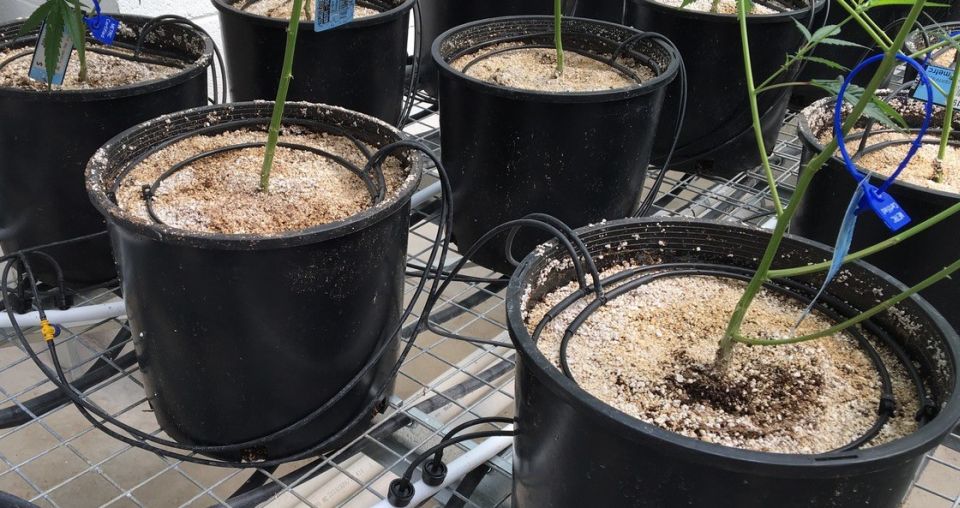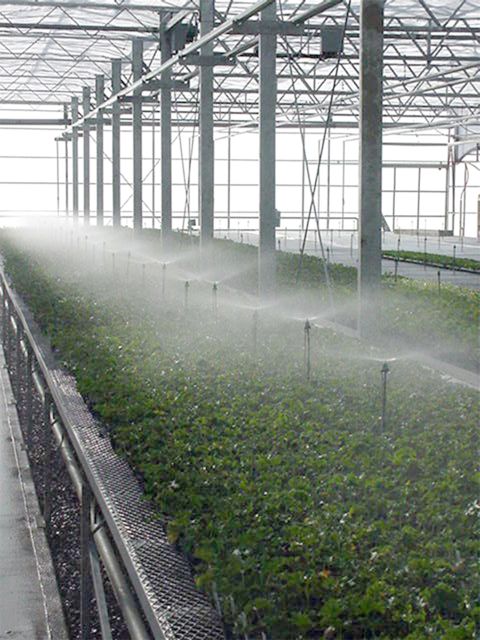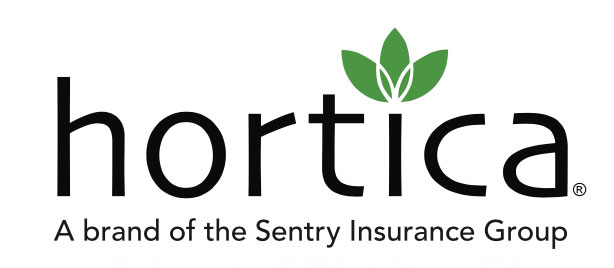A Step-by-Step Guide to Efficient Greenhouse Irrigation

These pressure-compensated drip rings are used for uniform irrigation distribution across the surface of the growing media. Photos: Dramm Corp.
Research shows that controlled-environment agriculture (CEA) is more water efficient than field agriculture. So why pay attention to irrigation efficiency, and what are some keys to improving efficiency?
Arguably, CEA is already efficient enough, but water is becoming scarcer everywhere due to population increases and other factors. The pressure to be more water-efficient is increasing in CEA right along with other forms of agriculture. Regulators are just as likely to impose restriction of water use on CEA operators as they are on field ag farmers, or the local factory.
One of the key advantages of CEA, that production is closer to population centers thereby requiring less transport, works against us a bit when it comes to water. Being closer to population centers means competing with the municipal, industrial, and recreational demands of cities. In or near cities, there is also more scrutiny by neighbors who are generally less tolerant of water waste and pollution. Improving your irrigation water footprint is being a good neighbor and may result in better customer relations and marketing benefits.
Water is usually cheap relative to other inputs. With so many other efficiency-related investments to consider, why bother with water? For starters, water won’t always be cheap. As demand increases, water infrastructure must expand. Many municipalities are needing to replace or expand existing fresh and wastewater processing capacity at significant cost. Many are restricting water supply and wastewater volume and/or chemistry until capacities are expanded, and the rates will rise when they are. Even with expanded facilities, an ever- increasing population results in the same increase in demand on a finite supply.

Uniform irrigation distribution reduces overspray and reduces irrigation times and volumes.
CEA irrigation water is also significantly more expensive than field ag water because the required infrastructure per acre of crop is much greater. The common use of fertigation, supplying nutrients through the irrigation water, makes every gallon of CEA irrigation water more expensive, and more capable of polluting water resources. Add to that the higher levels of filtration, disinfection, and other water treatment infrastructure costs and the increased cost per gallon takes a little of the gild off the lily of our relatively high efficiency of use.
Becoming more water efficient also pays off in other areas. More efficient use of irrigation water results in reduced wastewater, labor, heating, and automation; and at the same time can contribute to higher crop quality, reduced shrink, and reduced disease pressure.
Following are some key tips and best practices for irrigation water management systems. Each subject alone deserves a dedicated article, but we hope it will provide you with a quick checklist to use in evaluating your system(s).

Horizontal airflow fans are important to maintain uniform plant transpiration throughout the growing area.
Best Irrigation Practices
- Group plants in irrigation zones based on common water demand for flow rate and volume.
- Assure that irrigation systems provide the correct operating pressure as specified by the manufacturer. This will improve irrigation accuracy, reduce water use, extend the life of emitters and valves, and make better use of labor.
- Increase the number of irrigation zones. More granularity reduces water use by allowing more focused irrigation events.
- Eliminate off-target watering; If it doesn’t go into the container, it’s wasted. Consider drip, flood, capillary mat, deep water culture, and NFT irrigation, depending on the crop. Pay close attention to the distribution uniformity of overhead irrigation delivery.
- Confirm that the system delivers the appropriate flow rate. Pressures below or above the manufacturer’s emitter specifications may result in flows that are lower or higher than expected. If there are 600 pots on a bench that require 4 liters per hour (lph) each, then make sure the flow rate, pressure, and line sizes can deliver 10.58 gpm at the minimum pressure.
- Have adequate filtration throughout the facility to prevent emitter clogging, reduce biofilm buildup, and the resulting crop shrinkage.
- Maintain and regularly calibrate fertilizer injectors.
- Conduct regular irrigation training for new and old employees alike on best hand-watering practices, leak reporting, water demand per plant, and identifying overwatered and underwatered plants.
- Assess peak demand times and maintain use records.
- Investigate the possibility of implementing water catchment and recirculation systems for operation.
- Investigate collection, treatment, and reuse of cooling and dehumidification condensate water.
- Consider investing in flow meters to know actual flow rates and accumulated volume.
- Maintain uniform airflow movement with a professionally designed horticulture horizontal air flow system to avoid dry spots.
- Automation: It requires as little as three crop turns to recover costs to switch from hand watering to automated drip irrigation.
- Testing: Test distribution and delivery systems two or more times per year.
- Test water source quality once per year, more if it is affected by the seasons.
- Stop leaks. Just one leak at 1 drip per second equals about 174 gallons per month. Keep the systems the way it was designed or go back to the designer for redesign if changes
are desired. - Recycle and reuse. Particularly in large CEA facilities, it is common, safe, and cost effective to capture irrigation drain water, filter and disinfect it, balance up the nutrients, and reuse that water for irrigation.
- RO (Reverse Osmosis): Is it necessary for you? Wasting 15% to 50% of incoming water doesn’t make sense unless it’s necessary. Consult with an experienced horticulture expert to determine if it is appropriate for you.









